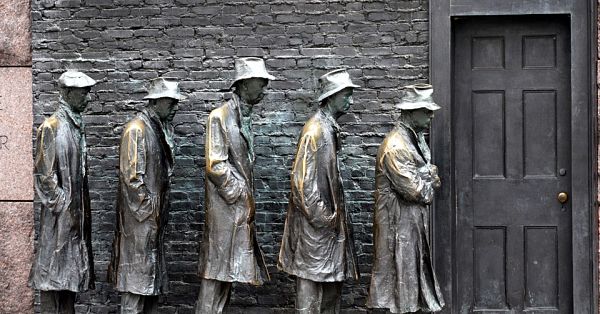by Gary Edmonds
In Matthew 28:19, Jesus left his followers with this command: ”Go and make disciples of all nations.” The gospel spread quickly and widely, and this remained the model for Christian missions for millennia.
Fast forward to today. Sending out a few to train others is still a solid strategy in a world where 1.6 billion people barely survive on less than $1.25 per day. Extreme poverty is brutal—it robs children of the ability to grow and to live with purpose and dignity. It breeds anger and despair. It leaves people open to violence.
While most church mission committees have a compassionate mindset, they don’t ask how mission work will change a community, and they aren’t coming up with ways to monitor and evaluate impact and sustainability. So when asked to articulate “success” in missions, many churches regurgitate two stats: 1) the number of short-term teams they sent out into the world, and 2) how many people they supported with the mission. They know little about their relationship with the communities; moreover, if those churches were asked how the mission helped them grow as a church, they would be hard pressed articulate it.
For decades, dozens of faith-based health and poverty-focused organizations have been on the frontlines, trusted by local communities, and helping to implement effective U.S. foreign assistance. This work is lowering maternal and child deaths, educating girls, increasing nutrition and preventing disease, teaching productive farming techniques and rain conservation technology; we’re even helping reconcile relationships for the common good. Church missions are starting to adopt a new mindset for mission work for the 21st century and committing to this life-giving work.
Expedition Church, in Payson, Arizona, is an example of one of those church missions. “If we had supported multiple missionaries, we would have made a wide but shallow difference,” says Senior Pastor Donovan Christian. Instead, Pastor Christian challenged his congregation to sponsor, not just a few of the children in the rural community Rwimbogo, Rwanda, but to sponsor all of them. And that is exactly what they did.
Food for the Hungry makes a 10 to 15-year commit to communities like Rwimbogo and takes a holistic approach. We rely on the community to define its greatest needs rather than tell them what we think they need. Then Food for the Hungry staff create and implement a strategic plan alongside the community, with the goal of graduating the whole community from aid recipient to sustainable independence.
In Rwimbogo, the strategic plan included buying and breeding livestock, buildings desks and a latrine for the school, several micro-enterprise opportunities, and a clean water source. We’ve seen this work improve health, education, agriculture, family incomes and the local economy. Along this journey, Expedition Church has been our faithful partner.
Transformation is not confined to Rwimbogo. Expedition members visit Rwimbogo, and that’s created trust and long-lasting relationships. Mission members provide Bibles and train pastors, meet with local government leaders, and witness needs being met — including their own. “Being part of this partnership,” Pastor Christian says, “is transforming people within our church and the way we view our responsibility to our own community.”
Church missions which partner with established health and development organizations go into a community asking, how do we help build this community so it can thrive on its own, and create a God honoring requirement? That is the question for the 21st Century Mission, and it leads to work that is neither temporary nor creating dependency. In fact, quite the opposite. Pastor Chabot says, “This is the most effective way to have a significant impact. Churches can sometimes give $250 a month to 50 different missionaries — or — dial-in all of it to one area and make an incredible impact to meet physical, spiritual and emotional needs. I’d rather look back in years of giving and generosity and see a whole community transformed.”
The 21st Century mission follows in the path of Jesus – “walking with“ those who are in need. By walking with, we can help communities see their own assets and resources and we learn to see others based upon their richness and dignity. Pastor Christian says this mission work has “helped us to be less inward focused” and helps keep the church’s heart soft and tender to what God is trying to do in the world.
For more information about the new model for missions, download the free eBook, The Remarkable Truth About Ending Extreme Poverty to begin to understand the root causes of poverty, solutions that create independence and how your church can have a deeper impact.

Gary Edmonds is President and CEO of Food for the Hungry, a relief and development organization of Christian motivation that works in Asia, Africa and Latin America.














